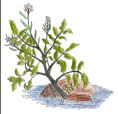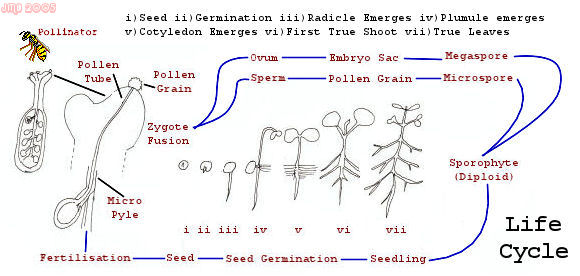|
Watercress Botany, Reproduction |

|
Growth |
Growth is possible were light conditions and temperature are good. It requires an alkaline soil which will contain good quantities of NPK, Ca, Mg, Br, Cu, Zn nutrients and water are absorbed from the soil through the root hairs by osmosis and passed up the stem to the lamina. If these conditions are met the plant will produce carbohydrates from photosynthesis with sunlight and CO2 , which will enable the protoplasm cells to aide, elongate and specialise, to aid the growth of leaves, shoots, flowers. |
Reproduction |
When the plant has reached maturity or its peak of growth for the season, it will produce a specialised flowering bud which will aid the sexual reproduction to produce seed. The flower colour and, scent attracts hover flies and bees causing entomophily pollination. Pollen is brushed onto the insect from the stamens, this is then carried by the insect to a nearby flowering cress. The pollen is then inadvertently transferred onto the receptacle surface of the stigma. Germination occurs when the pollen grain forms a pollen tube, which makes its way down the micopyle of the ovule and conveys its contents to the embryo sac. The male gamete fuses with the female gamete to achieve fertilisation, seeds will then form from this ovule, to be dispersed Seed when detached from silique floats down river. The seed absorbs water due to imbition. It then germinates on a wet bank, providing that access to oxygen and a spring temperature of 10c. Producing a radicle and plumule. Two cotyledon seeds are produced. These then elongate to form a true shoot. Leaves and roots will at this stage be obtaining nutrients from the soil. Leaves grows spirally from axillary buds to aid the use of sunlight. The stem is terminated by a bud. |

|
|
Collated by James M. Burton as part of H.N.D. course at Pencoed
Agricultural College. Taxanomical information correct as of 06:06:97.